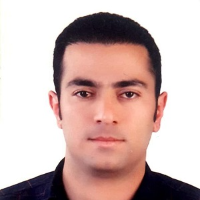Evaluating and zoning East Kurdistan Geosites -Case Study: Qorveh and Bijar Countries
Author(s):
Article Type:
Research/Original Article (دارای رتبه معتبر)
Abstract:
Introduction
Geomorphology tourism or geotourismis one of the areas ofmodern studies in geoscience and tourism studies based on the identification of geomorphosites or special geomorphological sites. Geomorphosites are of new concepts that have entered the tourism literature with an emphasis on the location of special sites, therefore, it emphasizes on a set of geographical, geological andgeoarchaeology features. They also havescientific, ecological, cultural and economic values simultaneously and are utilized to understand and exploit human tourism. Geosites, which are a branch of geotourismgive rise to sustainable development in that region, due to their unique attractions. This new economy is completed in a network of cultural heritage and natural resources managements. Geosites of the region must be identified and introduced prior to any planning. Geosites in east Kurdistan province are very less known and only some of them have superficially drawn attentions,therefore, it has been tried to evaluate the capabilities of these geosites in this research while introducing them. This area, along with the attractions of geotourism has also sensitivities and limitations that can be severely damaged, if the red lines are violated. In fact, the purpose of this is to introduce Kurdistan geositeswith the aim of becoming more familiar with the capabilities of this geosite, as well as investigating the geotourist problems of the region in order to pay attention to the planning related to the tourism industry that can be economically effective on areas with geosites.
Materials and methods
This is an applied research, and descriptive-analytical method was used to analyze information and data. The final analysis has been carried out based on the results obtained from the evaluation of the values and criteria of geotourism. Survey procedure, field visits and field studiesas well as library and documentary studies have been used to collect information. The combination of library and field information will determine the overall value of the region’s geotourism. Two methods of Comanescu and Fassoulaswere used to evaluate the geosites in this research. In addition to evaluating geosites, the areas susceptible to geotourism development in the study area were zoned, and two Fuzzy and ANP models were used for this purpose. The methodology is in a way that the data layers first became fuzzy and comparable, using fuzzy model. Then, the obtained weight was multiplied by each one of the data layers, and thefinal map was obtained by integrating the data layers in Arc GIS. Finally, geosites which are susceptible to geotourism development were selected using the final results obtained from the zoning as well as the results obtained from the geosites evaluation by the use of two Comanescu and Fassoulasmodels.
Discussion and results:
After identifying the geosites, Comanescu and Fassoulas methods were used to evaluate them. For this purpose, library methods and experts’ opinionshavebeenused. First, the geosites were evaluated according to the criteria of Comanescu method, and based on the final results obtained from the evaluations, the GhalehQomchoqayhas the highestvaluewith a totalof 84 scores. After the GharQomchoqay, SarabQorveh and CheshmehTangzhave the highest valueswith 76 and 69 scores, respectively. Then the geosites were evaluated using the Fassoulas method, and according to the final results, GhalehQomchoqay and SarabQorveh with a total of 17.5 and 13 scores have the highest values, respectively. The results obtained from the evaluation by both Comanescu and Fassoulasmethods indicate the high value of GharQomchoqay and SarabQorveh for geotourism purposes. In the present research, in addition to the geosites evaluation, areas susceptible to development have been identified using the intended criteria and two Fuzzy and ANP models have been used for this purpose.
Conclusion
After the evaluation done by the methods of Comanescu and Fassoulas,zoning of the areas susceptible to geotourism development was carried out,using the intended criteria. The results indicate that among the geosites of the study area, 8 geosites including GhalehQomchoqay,SarabQorveh, CheshmehTangz and Baba GoorGoor’sEzhdaha Mount, Badr and Parishan mountains, GharGolestaneh, KoohNesar and SarabBijar have a high Potential for the purposes of geotourism development. In most important of researches done in the country, the evaluation methods have only been used. However, the most important advantage of this research is that all the necessary criteria have been evaluated and the final result has been the outcome of the multi-criteria evaluation. In fact, in addition to the evaluation methods, the zoning methods have also been used. The use of zoning methods has led to taking the environmental factors into consideration in the selection of top sites and the sites selected as sexemplary sites need to meet all the necessary requirements for the development of geotourism infrastructure.Keywords:
Language:
Persian
Published:
Journal of of Geographical Data (SEPEHR), Volume:27 Issue: 107, 2018
Pages:
133 to 148
https://magiran.com/p1915828
دانلود و مطالعه متن این مقاله با یکی از روشهای زیر امکان پذیر است:
اشتراک شخصی
با عضویت و پرداخت آنلاین حق اشتراک یکساله به مبلغ 1,390,000ريال میتوانید 70 عنوان مطلب دانلود کنید!
اشتراک سازمانی
به کتابخانه دانشگاه یا محل کار خود پیشنهاد کنید تا اشتراک سازمانی این پایگاه را برای دسترسی نامحدود همه کاربران به متن مطالب تهیه نمایند!
توجه!
- حق عضویت دریافتی صرف حمایت از نشریات عضو و نگهداری، تکمیل و توسعه مگیران میشود.
- پرداخت حق اشتراک و دانلود مقالات اجازه بازنشر آن در سایر رسانههای چاپی و دیجیتال را به کاربر نمیدهد.
In order to view content subscription is required
Personal subscription
Subscribe magiran.com for 70 € euros via PayPal and download 70 articles during a year.
Organization subscription
Please contact us to subscribe your university or library for unlimited access!



